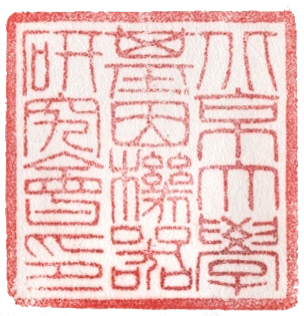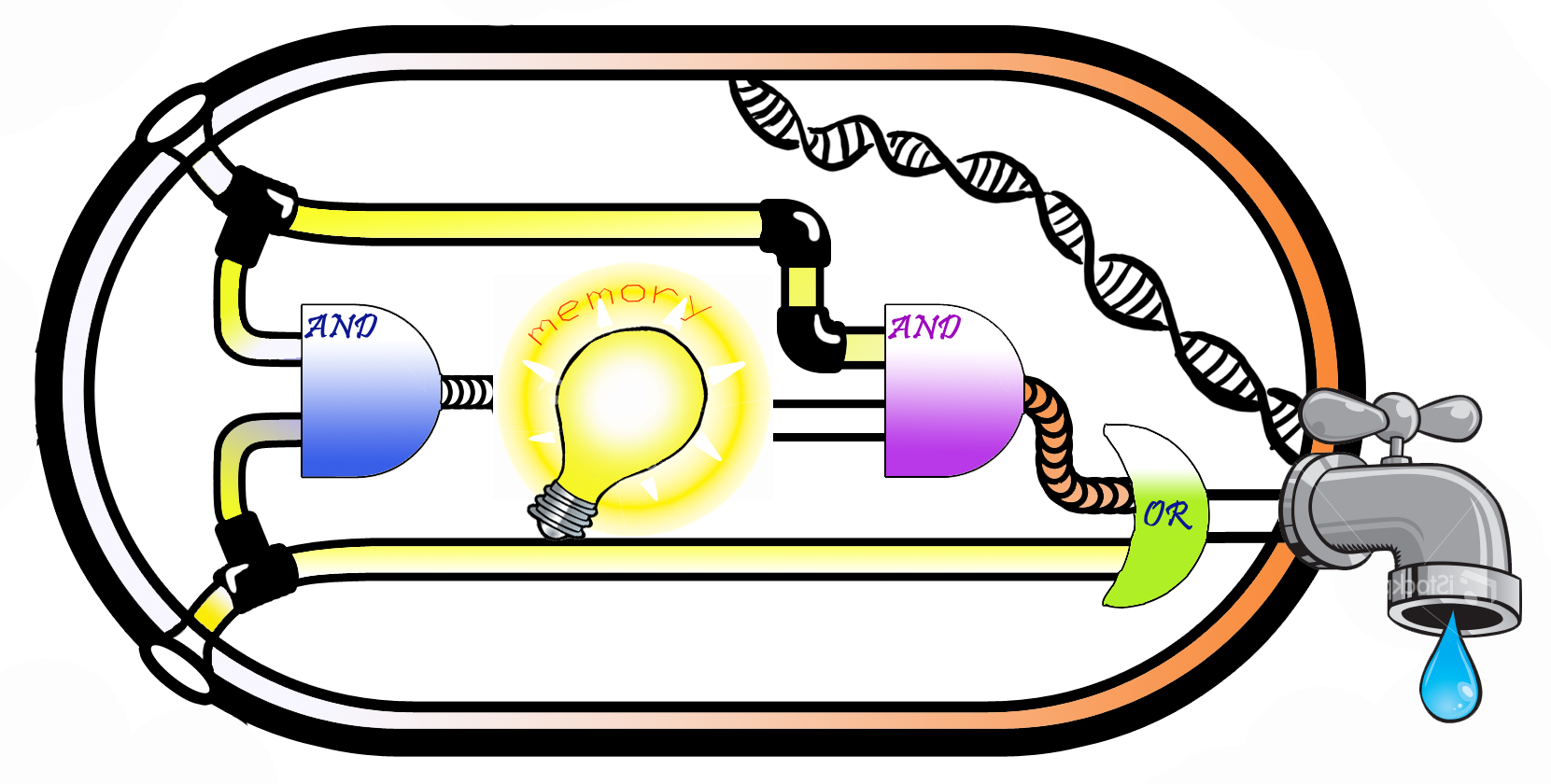|
|
| (82 intermediate revisions not shown) |
| Line 1: |
Line 1: |
| - | {{PKU_Beijing/Blue}} | + | {{PKU_Beijing/Header}} |
| | + | {{PKU_Beijing/Sidebar}} |
| | + | {{PKU_Beijing/Header2}} |
| | + | ==='''Conditioned Reflex Mimicking in ''E.coli'''''=== |
| | | | |
| - | <html>
| + | We are engineering our E.coli cells to process the correlation information of two environmental signal, similar to the process of classical conditioning in higher organisms. In our circuits we use a bistable switch as the memory module to represent the memory state; we also constructed a series of AND gates which can sense conditioned and unconditioned signals, and output a repressor protein to change the memory state of the bistable switch. In this way, our E.coli cells can convert the information on the concurrence of two signals to its memory. After the memory module is switched, given the conditioned stimulus, E.coli will activate its reporter module and thus exhibit the "conditioned response". |
| - | <table width="965" border="0" cellspacing="0" cellpadding="0">
| + | [[Image:PKU_Logic_Circuit.png|600px|center]] |
| - | <tr bgcolor="#0E7AD3">
| + | |
| - | <td height="40" colspan="3">
| + | |
| - | <img src='https://static.igem.org/mediawiki/2009/2/21/PKU_Welcome_to_Wiki.png'>
| + | [[Team:PKU_Beijing/Project|Start your journey into the fancy world of Conditioned Reflex Mimicking in E.coli]] |
| - | </td>
| + | |
| - | </tr>
| + | ==='''Road Map'''=== |
| - | <tr bgcolor="#0E7AD3">
| + | Following is the road map of our project. We still need a second stage assembly in order to finish our project. |
| - | <td height="20" colspan="3"> </td>
| + | You can click on the pictures to see the '''results''' of each module.So here it is. |
| - | </tr>
| + | {{PKU_Beijing/RoadMap}} |
| - | <tr>
| + | |
| - | <td width="50" bgcolor="#0E7AD3"> </td>
| + | ==='''Recommondations For Our Site'''=== |
| - | <td width="865" bgcolor="#0E7AD3">
| + | *'''Human Practice'''<BR> |
| - | <table width="865" border="0" cellspacing="0" cellpadding="0">
| + | You would really want to read our report from a survey we carried out on DIYbio. |
| - | <tr>
| + | Many similar surveys focus on what people think about, and what people would '''possibly''' do if faced with such problems. Our survey shows what people '''really''' do to DIYbio. It directly reflects the reality of the present situation that DIYbio is in.<br> |
| - | <td width="16"><img src="https://static.igem.org/mediawiki/2009/5/54/PKU_Upperleft.png" /></td>
| + | [[Team:PKU_Beijing/Human/Survey|'''[Learn More]''']]. |
| - | <td width="833"></td>
| + | |
| - | <td width="16"><img src="https://static.igem.org/mediawiki/2009/6/62/PKU_Upperright.png" /></td>
| + | |
| - | </tr>
| + | *'''Improvement on AND Gate'''<BR> |
| - | <tr>
| + | Our original AND Gate is from Voigt Lab. We make it into standard parts and use a combination of promoter, which leads to several AND Gates that has different properties. The most wonderful thing in the summer holiday that we achieved a greatly improved AND Gate.<br> |
| - | <td width="16"></td>
| + | [[Team:PKU_Beijing/Parts_Characterization/BBa_K228258|'''[Learn More]''']]. |
| - | <td width="833"></html>
| + | |
| - | <span style="font-size: 16pt">Project Summary</span><hr> | + | |
| - | : Back to the beginning of 20th century, Ivan Pavlov brought up the concept "conditioned reflex". The famous work not only earned him the 1904 Nobel Prize in Physiology and Medicine, but also a milestone for the research of learning and cognition. Here in PKU iGEM2009 Team, we built a learning system in <i>E.coli</i>, and we believe it can reflect the mechanism of conditioned reflex.
| + | *'''Assembly'''<BR> |
| - | : For more information, please go to The Project
| + | The most difficult work in the construction of a multi-Module system is assembly. After we have accomplished all the individual modules from Jul to Sept, we made a breakthrough during the National Day (we did experiments during the holiday). That is the first stage assembly is accomplished.<br> |
| - | <span style="font-size: 16pt">Peking University</span><hr>
| + | [[Team:PKU_Beijing/Project/Assemble|'''[Learn More]''']]. |
| - | : Peking University is a comprehensive and national key university. The campus, known as "Yan Yuan"(the garden of Yan), is situated at Haidian District in the western suburb of Beijing, with a total area of 2,743,532 square metres (or 274 hectares). It stands near to the Yuanmingyuan Garden and the Summer Palace.<br>
| + | |
| - | : Peking University is proud of its outstanding faculty, including 53 members of the Chinese Academy of Sciences (CAS), 7 members of the Chinese Academy of Engineering (CAE), and 14 members of the Third World Academy of Sciences (TWAS).<br> | + | |
| - | : The university has effectively combined research on important scientific subjects with the training of personnel with a high level of specialized knowledge and professional skill as demanded by the country's socialist modernization. It strives not only for improvements in teaching and research work, but also for the promotion of interaction and mutual promotion among various disciplines.<br>
| + | {{PKU_Beijing/Foot}} |
| - | : Thus Peking University has become a center for teaching and research and a university of a new type, embracing diverse branches of learning such as basic and applied sciences, social sciences and the humanities, and sciences of medicine, management, and education. Its aim is to rank among the world's best universities in the future.<br>
| + | __NOTOC__ |
| - | : | + | |
| - | <span style="font-size: 16pt">Acknowledgement</span><hr>
| + | |
| - | :The PKU iGEM2009 Team strongly acknowledges following institutes/companies
| + | |
| - | :<logo>
| + | |
| - | <html>
| + | |
| - | </td> | + | |
| - | <td width="16"></td>
| + | |
| - | </tr>
| + | |
| - | <tr>
| + | |
| - | <td width="16"><img src="https://static.igem.org/mediawiki/2009/3/32/PKU_Downleft.png" /></td>
| + | |
| - | <td width="833"></td>
| + | |
| - | <td width="16"><img src="https://static.igem.org/mediawiki/2009/0/09/PKU_Downright.png" /></td>
| + | |
| - | </tr>
| + | |
| - | </table>
| + | |
| - | </td>
| + | |
| - | <td width="50" bgcolor="#0E7AD3"> </td>
| + | |
| - | </tr>
| + | |
| - | <tr bgcolor="#0E7AD3">
| + | |
| - | <td height="20" colspan="3"> </td>
| + | |
| - | </tr>
| + | |
| - | </table>
| + | |
| - | </html>
| + | |
 "
"



